More results...
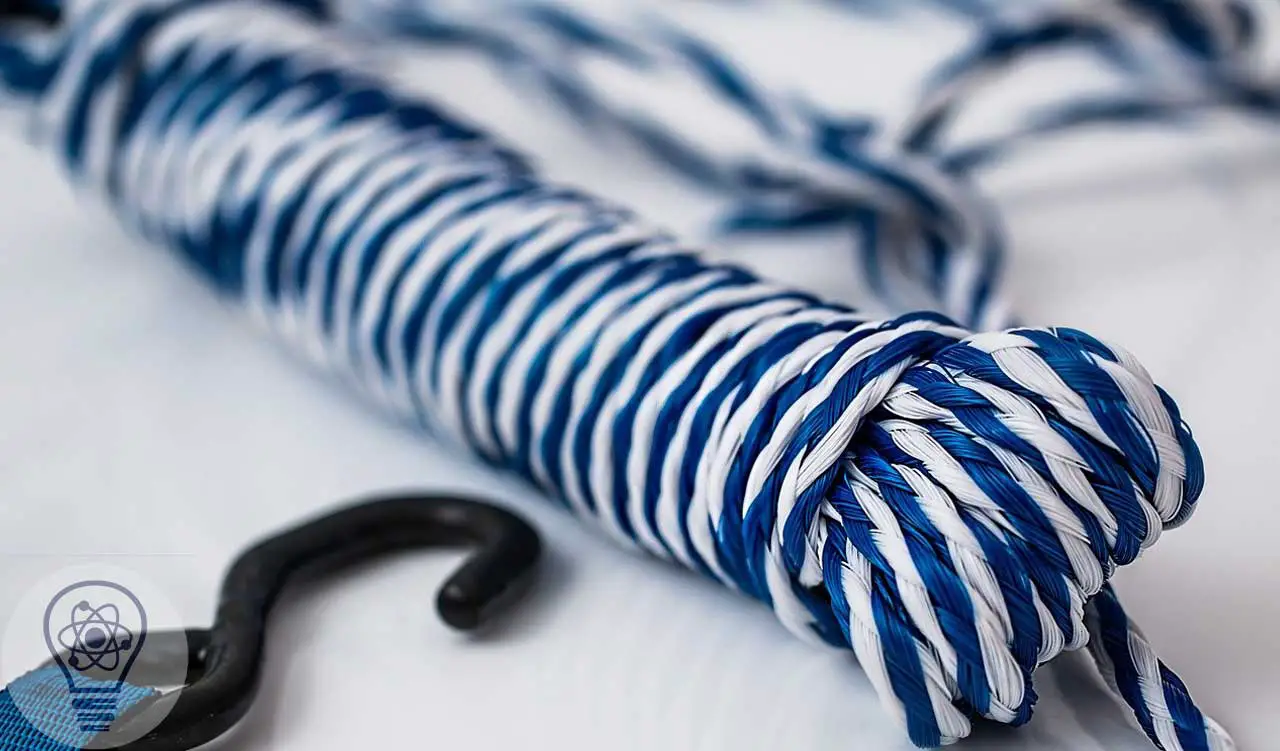

Ultra-high molecular weight polyethylene is a unique polymer, thermoplastic with outstanding physical and mechanical properties. UHMWPE is also polyethylene which has the same monomer as the general use of polyethylene. However, it has a higher molecular weight than the general use of polyethylene. Its molecular weight is generally around 4-7 million g/mole and its density is 0.930–0.935 g/cm3.
| Type of PE | Molecular weight |
| Common linear polyethylene | 10,000 – 20,000 |
| High molecular weight polyethylene | 30,000 – 50,000 |
| Ultra-high molecular weight polyethylene. (UHMWPE) | 2,000,000 – 6,000,000 |
UHMW Polyethylene polymer molecules contain amorphous regions and crystalline regions. This structure is called the “Lamella” structure.
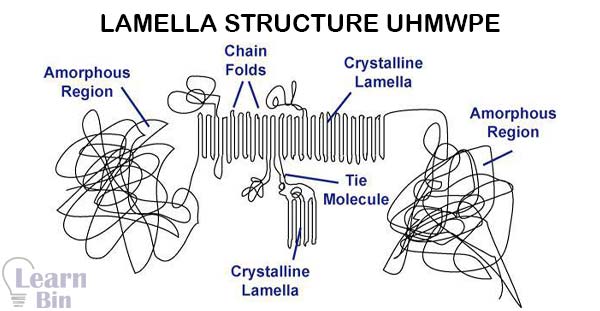
It can be can visualize the molecular chain of 'Ultra High Molecular Weight Polyethylene' as a tangled string of noodles over a kilometer long.
The polyethylene molecular chain has the tendency to rotate about the C-C bonds and create chain folds. Folding of this chain, in turn, enables/allows the molecule to form locally ordered, sheet-like regions known as 'Crystalline lamellae'. These lamellae are embedded within amorphous (disordered) regions.
The crystalline lamellae are microscopic. So it cannot be observed with (invisible) the naked eye. Visible light is diffracted by the lamellae, giving UHMW Polyethylene a white, non-transparent (opaque) appearance at room temperature.
At temperatures, that are higher than the melt temperature of the lamellae, around 137°C, UHMWPE becomes (semi-transparent) translucent. The lamellae are on the order of 10–50 nm in thickness and 10–50 μm in length. The average spacing between lamellae is on the order of 50 nm.
| Property | HDPE | UHMWPE |
| Molecular weight (million) | 0.2-0.5 | 2-6 |
| Melting point (℃) | 130-137 | 125-135 |
| Density (g/cm3) | 0.95-0.96 | 0.93-0.94 |
| Tensile Yield (MPa) | 26.2-33.1 | 19.3-23 |
| Elongation at break (%) | 10-120 | 250-450 |
| Tensile modulus (MPa) | 400-3400 | 600-1500 |
| Izod impact (Jm-1) | 21-210 | 1070 - no break |
| Shore d hardness | 67-73 | 60-65 |
There are three main steps in making UHMWPE products. The first step is the "polymerization" of ethylene gas to UHMWPE powder. The second step is the "conversion" of UHMWPE powder to consolidated form. The final step is "processing" in order to make products.
The polymerization process is done using a Ziegler-Natta catalyst i.e. titanium chloride, (TiCl4) and tri ethyl-aluminum, Al(C2H5)3 at lower temperatures (66-90 ℃) and pressures (0.4-0.6 MPa) The polymerization takes place in a solvent which is a heterogeneous system contains hexane solvent, ethylene gas, and catalyst. This system is used for mass and heat transfer.
Long straight-chain molecules are formed as a powder from this process and this powder must be consolidated under elevated temperatures and pressures because of its high melt viscosity in powder form. The Results are white granular powder. Calcium stearate is added for isolation.
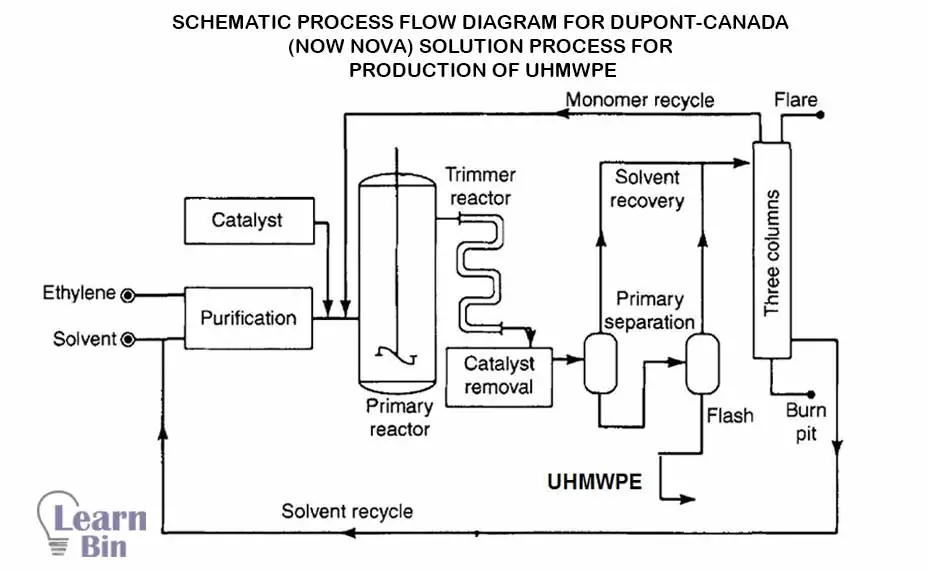
The catalyst, as granules, is mixed with a liquid hydrocarbon, which simply acts as a diluent. Then Ethylene is passed under pressure into the slurry and is polymerized.
This reaction happens in a large loop reactor with the mixture continuously stirred. On opening a valve, the product of the reaction is released and the solvent is evaporated to leave the polymer product. However, the polymer is still containing the catalyst. So, water vapor, flowing with nitrogen passes through the polymer to react with the catalyst and destroy its activity.
UHMWPE is produced in powdered form and should be consolidated under higher pressures and temperatures because of its high melt viscosity. UHMWPE does not flow like lower molecular weight polyethylene when raised above its melting temperature.
So, many thermoplastic processing techniques, such as injection molding, screw extrusion, or blow molding are not practical for UHMWPE. Instead, semi-finished UHMWPE is normally produced by ram extrusion and compression molding.
Unlike HDPE and LDPE, even heating above 200 ℃ UHMWPE shows a high granular structure that leads to difficulty in processing. This is happening because of the high molecular weight and low rheological properties (low flowability). So, polymers like UHMWPE require proper temperature and high pressure for achieving proper plasticization.
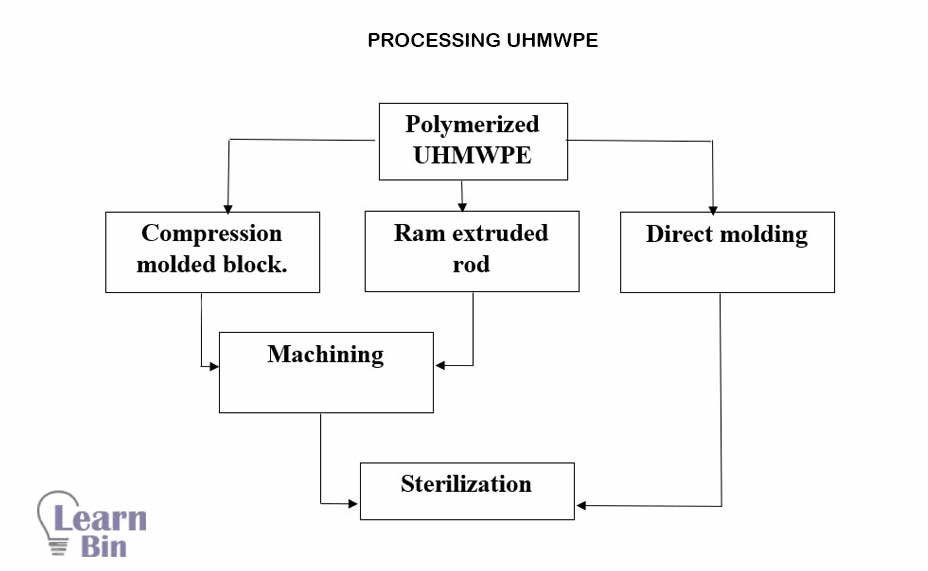
Sterilization is done by using Gamma rays, electron beams, or plasma gas.
There are two methods that are used to process UHMWPE.
Ram extrusion process is used for the manufacture of UHMW rods and tubing profiles. UHMWPE powder is gravity fed into a chamber and a hydraulic ram pushes the powder from this chamber into the die. The die is the shape of the desired plastic, a certain diameter rod, a certain outer diameter, an inner diameter tube, or a profile shape.
Heaters are employed on the outside of the barrel and die to heat the plastic and make it form into the shape of the die. The hydraulic ram moves back and forth continuously feeding the powder into the die.

As the material comes out of the die, it travels the length of the conveyor after which it is cut to length. Ram extrusion does not shear the material. It moves the material by hydraulically pushing it through the die which is the desired shape of the end product. In Ram, the extruder temperature maintains around 180-220 ℃.
UHMW-PE becomes gelatinous when it melts instead of molten. So, UHMWPE can only be extruded with this type or a similar type of process.
UHMWPE is available in standard sheets, rods, and tubes (semi-finished products) for producing dimensionally stable parts. Semi-finished UHMWPE can be sawed, milled, turned, planed, drilled, or punched to get the final product. Machining Processes for making UHMWPE final products are Sewing, Turning, Milling, Planning, Drilling, Grinding/Sanding, Forming, and Welding.
Compression molding is the process of molding material in a confined shape by applying pressure and heat. This molding process is followed by two steps. The first one preheating and the second one is pressurizing.
At first UHMWPE powder is measured into the matched mold in the open position. Then the mold is closed by bringing the two halves together. UHMWPE powder is distributed evenly (possibly by shaking) after closing the mold. After the powder is distributed evenly, the mold is pre-heated, then compressed under very slight pressure. Pressure is exerted to squeeze the resin so that it fills the mold cavity.
Finally, the mold is exerted full pressure. While under pressure the mold is heated. Due to the heat, the resin flows and obtains the shape of the mold. Finally, the product is cooled to room temperature.
The pressure of the molding process is 2000-3000 psi (13.8-20.7 MPa) and the Mold temperature range is 300ºF to 375ºF (149⁰C-191⁰C)
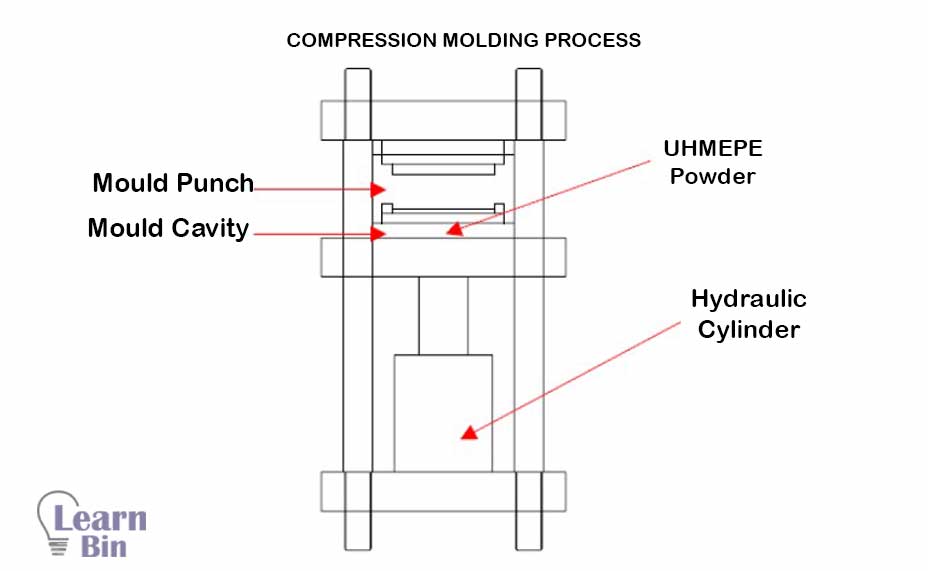
| Industry | Application |
| Sports industries | Golf ball cores Fishing lines Snowboards Bowstrings Climbing equipment Spearguns |
| Defense industry | Bulletproof vests Military helmets Suspension lines on parachutes and paragliders Cut-resistant gloves |
| Medical industry | Total joint replacements Spine implant Hip replacements Blood filters |
| other | Conveyor wear strips Guide rails Bearings Paper machine suction boxes Chute lining trailer linings Snowmobile skis sliders idler wheels drive sprockets & suspension bushings. |
Read more about plastic technology.

Cover Image was designed using Image by Steve Buissinne from Pixabay